Cities and Towns
Smart growth means taking advantage of infrastructure that already exists, capitalizing on the streets and sidewalks, the water pipes and sewer systems, the central business districts, the residential neighborhoods, the parks and recreational facilities that give established cities and towns their distinct identities and attractions.
Directing future investment to these centers, both large and small, will ensure that we use our land most efficiently and effectively, preserve the surrounding open space and halt the spread of suburban sprawl. Revitalizing our urban areas through redevelopment, and enhancing our towns by preserving community character, design and historic features, and creating walkable spaces, a vibrant mix of uses and a range of housing options, will make New Jersey a truly sustainable state..
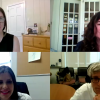
While New Jersey is one of the most diverse states in the nation at the macro level, at the local level it is also one of the most segregated. The state has grown more demographically diverse over the last two decades, but most of its individual towns and neighborhoods are either predominantly white or predominantly non-white, with few places occupying the “diverse” range in between.

“It is necessary to invoice Venus’s story, not only through black history, but through Latinx history and queer history. It is too important to excavate this kind of history, so what happened to Venus won’t happen again because it continues to happen.” expressed Michael Roberson, Professor, New School and Union Theological Seminary at the 2023 Planning and Redevelopment Conference hosted by the New Jersey Chapter of the American Planning Association and New Jersey Future.

“The Woodmont Metro at Metuchen Station was a catalyst for further redevelopment in downtown Metuchen… Having residents living downtown has resulted in a remarkable growth of restaurants, making downtown Metuchen a highly popular regional dining destination. New retail and service businesses have also opened creating a vibrant, active downtown,” explains Jay Muldoon, Director of Special Projects with the Borough of Metuchen.

New Jersey is paradoxically one of the most diverse and most segregated states in the nation. The state has grown more diverse over the last two decades, with its non-Hispanic white percentage shrinking from two-thirds of the state population in 2000 to a little more than half as of the 2020 Census, with notable proportional growth among Hispanic and Asian-American communities. But New Jersey’s macro-level diversity often does not translate into integration at the local level, and places that are integrated at the local level don’t always stay that way.
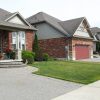
With the youngest members of the demographically large Millennial generation (roughly, those born between 1981 and 1996) aging into young adulthood, the number of people between the ages of 25 and 44 increased nationwide by 3.5% between 2015 and 2019. In New Jersey, however, the population in this age range declined by 1.2% over the same time period, with high housing costs appearing as a major motivating factor.
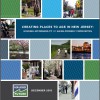
In this report, New Jersey Future analyzed housing affordability in each New Jersey municipality, to see where households headed by someone 65 or older have high housing costs. The places where housing cost burden is greatest fall into two groups: towns that are expensive for everyone, and towns that are dominated by larger, single-family housing stock. December 2015.
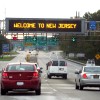
In this report, New Jersey Future and Smart Growth America analyzed per-capita road usage. The results show that places with the highest activity density have the lowest per-capita usage, suggesting per-capita road-maintenance costs can be reduced by even marginal increases in density. November 2015.
An interim report, three years after Hurricane Sandy, on New Jersey Future’s groundbreaking local recovery planning manager program, including lessons learned and recommendations. October 2015.
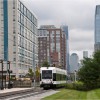
An analysis of household income distributions in the neighborhoods around New Jersey’s transit stations shows that not all station areas offer the benefits of transit access across all income levels. June 2015.
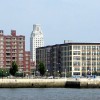
The Economic Opportunity Act of 2013 included additional incentives for projects destined for “smart-growth” areas. This report analyzes how effective the updated incentives have been at directing growth to those areas. December 2014.
See all New Jersey Future Blog posts and articles in this category »
Reports, Presentations and Testimony
- NJM May 2019 stormwater utlities Van Abs
- 03/07/2019: Testimony on S1742, S1768 and S1774
- New Jersey Future Resilient Coastal Communities Phase 2 Report 5-22-18
- 02/14/2019: Testimony on A2697-S1783
- Creating Great Places to Age: Land Use Analysis of Aging Friendliness (Westwood Borough, July 2018)
- Rename to: Creating Great Places to Age: Land Use Analysis of Aging Friendliness (Teaneck, Feb. 2019)
- Creating Great Places to Age: Land Use Analysis of Aging Friendliness (Somerdale, Jan. 2019)
- Trenton Transit Center Strategic Action Blueprint July 2018
- APA Conference Places To Age Best Practices
- New Jersey Future Demographic Trends by Age September 2017
- Jersey Water Works Water Infrastructre Funding Report 06-2017 (Intern Report)
- Oxford Byway to Destination NJM June 2017
- New-Jersey-Future-Assessment-of-the-NJLIHTC-program
- New Jersey Future 2017 Gubernatorial Platform
- Strategic Recovery Planning Report Maurice River 05-2015
- Strategic Recovery Planning Report Commercial 12-2015
- 2013 Facing Our Future Report - Infrastructure Investments Necessary for Economic Success - Links to Water Infrastructure Resources
- League of Municipalities Article on Aging in Community April 2016
- New Jersey Future report to NJDEP re Liberty State Park 02-04-15
- Final Jersey City to Proacitvely Test Water Supply Press Release %282%29
- New Jersey Future Housing Affordability and Aging-Friendly Communities
- Housing Affordability and Aging-Friendly Communities Housing Cost-Burden Municipal Data by Municipality
- Housing Affordability and Aging-Friendly Communities Housing Cost-Burden Municipal Data by Cost Burden Rank
- fiscal-implications-roads-in-new-jersey
- NJFuture-In-Deep-10-15-WEB
- 2013 Facing Our Future Report - Infrastructure Investments Necessary for Economic Success
- Can We Depend on Our Water Infrastructure?
- 2014-11-18_Trenton Green Infrastructure Feasibility Study.compressed
- Economic-Opportunity-Act-and-Smart-Growth-Progress-Report
- Trenton_Meeting_Summary_FINAL
- New Jersey Future Stormwater Utilities Report 9-14 (Intern Report)
- Agenda for Change
- Case Study: Paterson
- Case Study: Jersey City
- Case Study: Hoboken
- Case Study: Camden
- Ripple Effects
- Van Abs: Water Infrastructure in New Jersey's CSO Cities
- Creating Great Places To Age in New Jersey
- Creating Places To Age in New Jersey Municipal Best Practices
- Creating Places To Age in New Jersey municipal data
- Creating Places To Age Bergen-Passaic Supplement
- NJFuture Cluster Presentation I Open for Municipalities
- 03/19/2013: New Jersey Future CDBG-DR comments
- How Clustering Works
- Clustering-Factsheet_11_5_2013
- Cluster-Development-Act-summary-of-key-provisions-10-13
- Statutory and Regulatory Barriers to Green Infrastructure in New Jersey 1-13 (Intern Report)
- Somerset County Investment Framework 1-13 (Intern Report)
- Targeting Transit -- New Jersey Future
- Innovation Districts as Economic Growth Strategy 9-12 (Intern Report)
- Wastewater Planning County Fact Sheets
- Case Studies of Non-Contiguous Clustering in New Jersey 04-12
- Leinberger in the League Magazin
- Financial Benefits of Density in Two New Jersey Downtowns 7-11 (Intern report)
- Route 1 Planning Through Partnerships
- Transit-Oriented Development Workshop for HCDNNJ memb mtg 06-15-2011
- Transfer of Development Rights Task Force Report 08-11-10
- Municipal Resource Conservation Assessment 06-01
- Case Study Hopewell Township 08-00
- Presentation: Land Preservation Using Off-site Clustering 03-19-11
- A Citizen's Guide to Transit-Oriented Development
- Chasing Their Tails: Municipal Ratables Chase Doesn't Necessarily Pay 07-10
- Race to the Middle: The Homogenization of New Jersey's Population Density
- Moving Out: New Jersey's Population Growth and Migration Patterns
- Realistic Opportunity? The Distribution of Affordable Housing and Jobs in New Jersey
- Getting to Work 11-08
- Built Out Permit Activity 12-10
- Built Out 12-10











